A walk in the historical centre of Liepaja indicates - in earlier times this city was a small metropolis. One can consider that Liepaja architectonically is the second most richest and interesting city after Riga. Liepaja got several historical centres - Vecliepaja together with summerhouse quarters next to it, Jaunliepaja and Karosta.
Oldest centre is Vecliepaja (Old Liepaja) where up to this day there has been preserved a maze of ancient small streets, lots of wooden buildings from 17th and 18th century and numerous ornate and very diverse buildings of later times and styles. Plenty of ornate houses serves as a witness to ambitions of city.

J.Dubelsteina Street is rich with old wooden buildings.

Kurmajas prospekts 2,4,6 - ornate building in early Art Noveau style.
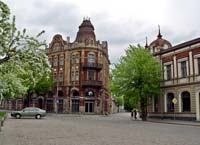
Graudu Street.

Graudu Street 46 and 48.

Old wooden building in Ludvika Street 7.
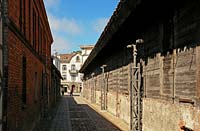
Warehouses from 18th and 19th centuries in Jana Street.
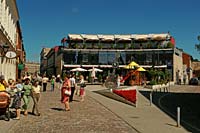
One of few contemporary buildings in Vecliepaja - club "Pablo".
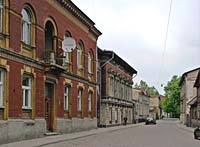
Sight of K.Valdemara Street.
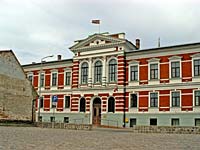
Building of Liepaja City Council.

Petertirgus market.
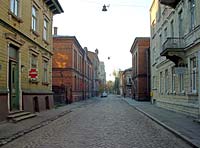
Republikas Street, view towards the sea.
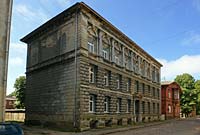
Neo-Rennaisance - Rundbogen style building in Republikas Street 21.

Ornate wooden building next - Republikas Street 23.
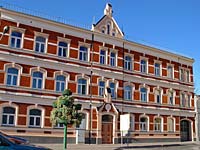
Building in Kursu Street 20.

Unsighty building in Kursu Street 21 has got very interesting staircase.

Drawing in staircase, Kursu Street 21.
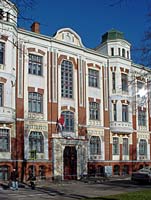
Building in late Art Nouveau - verticalism style in Rozu Street 10.

Interior view in Sv. Joseph's Cathedral.
Photos taken in 9th May and 2nd November 2004, 14th July 2007.



















